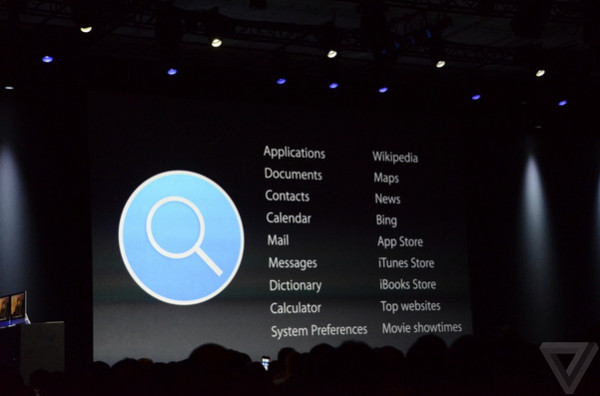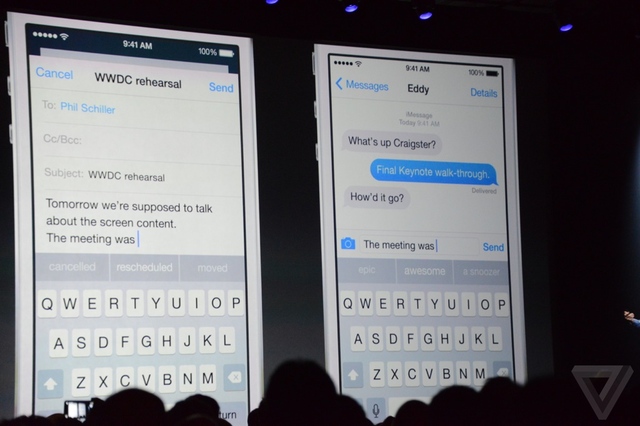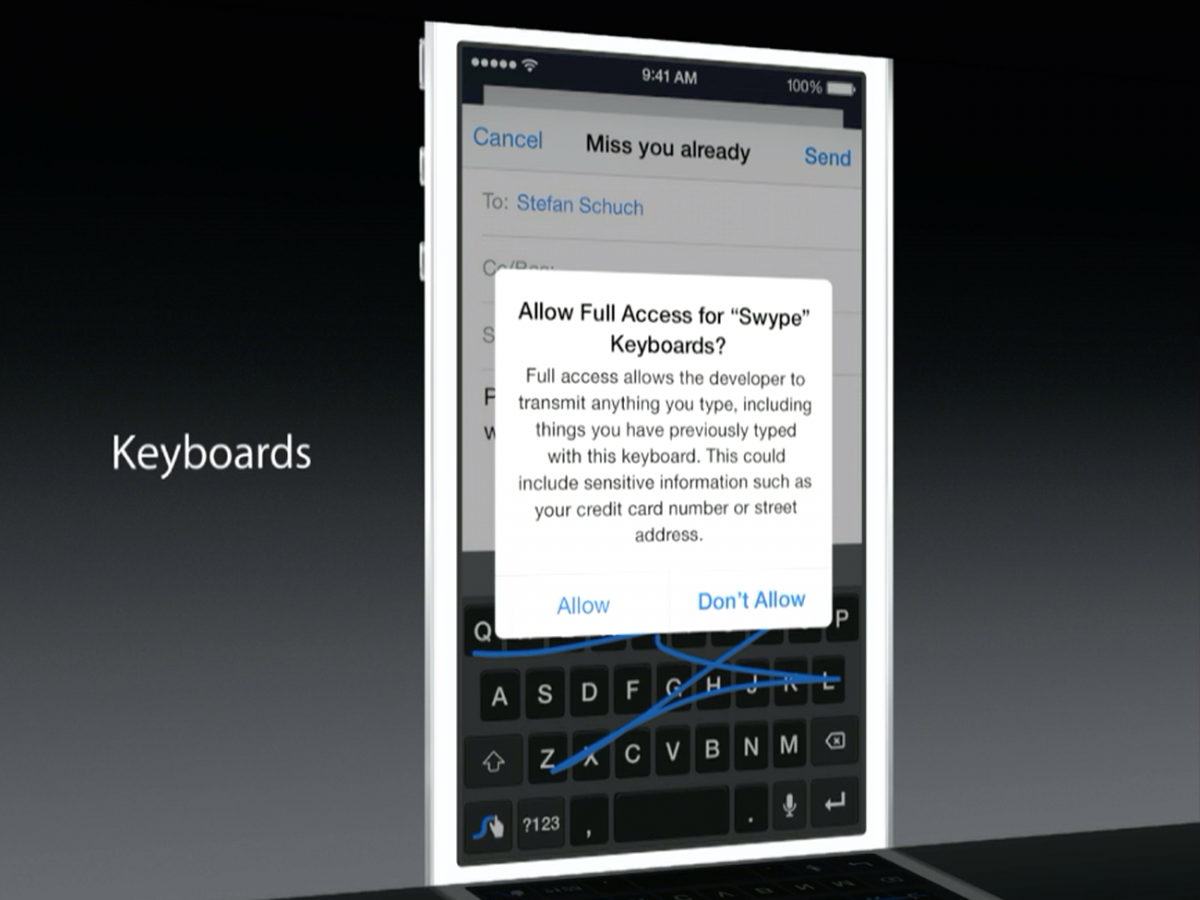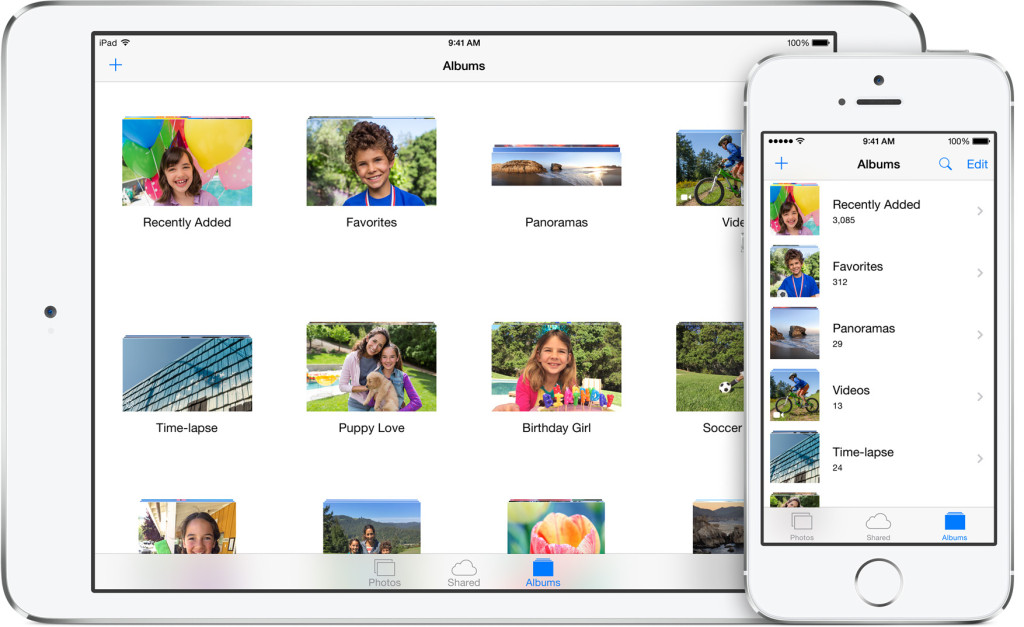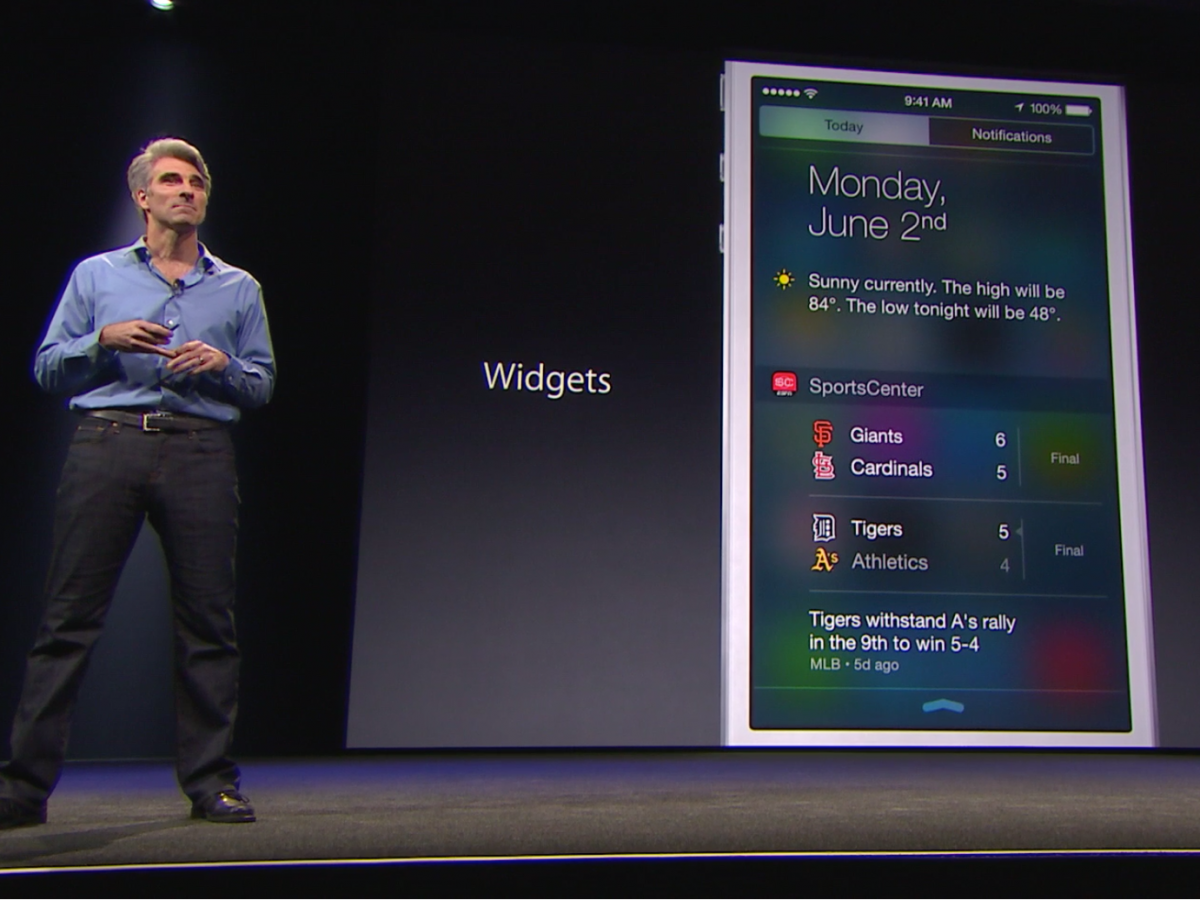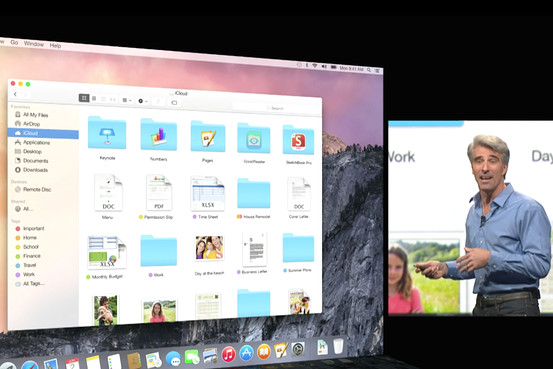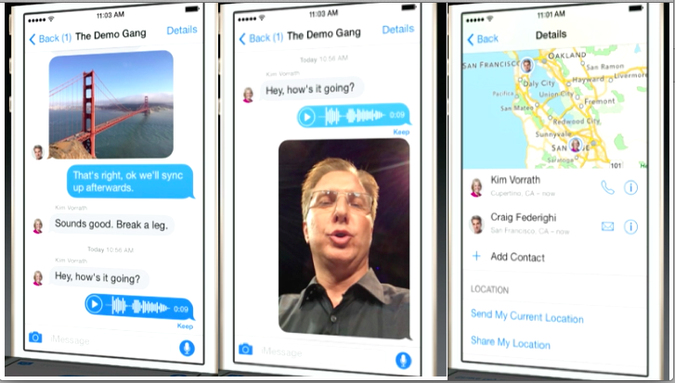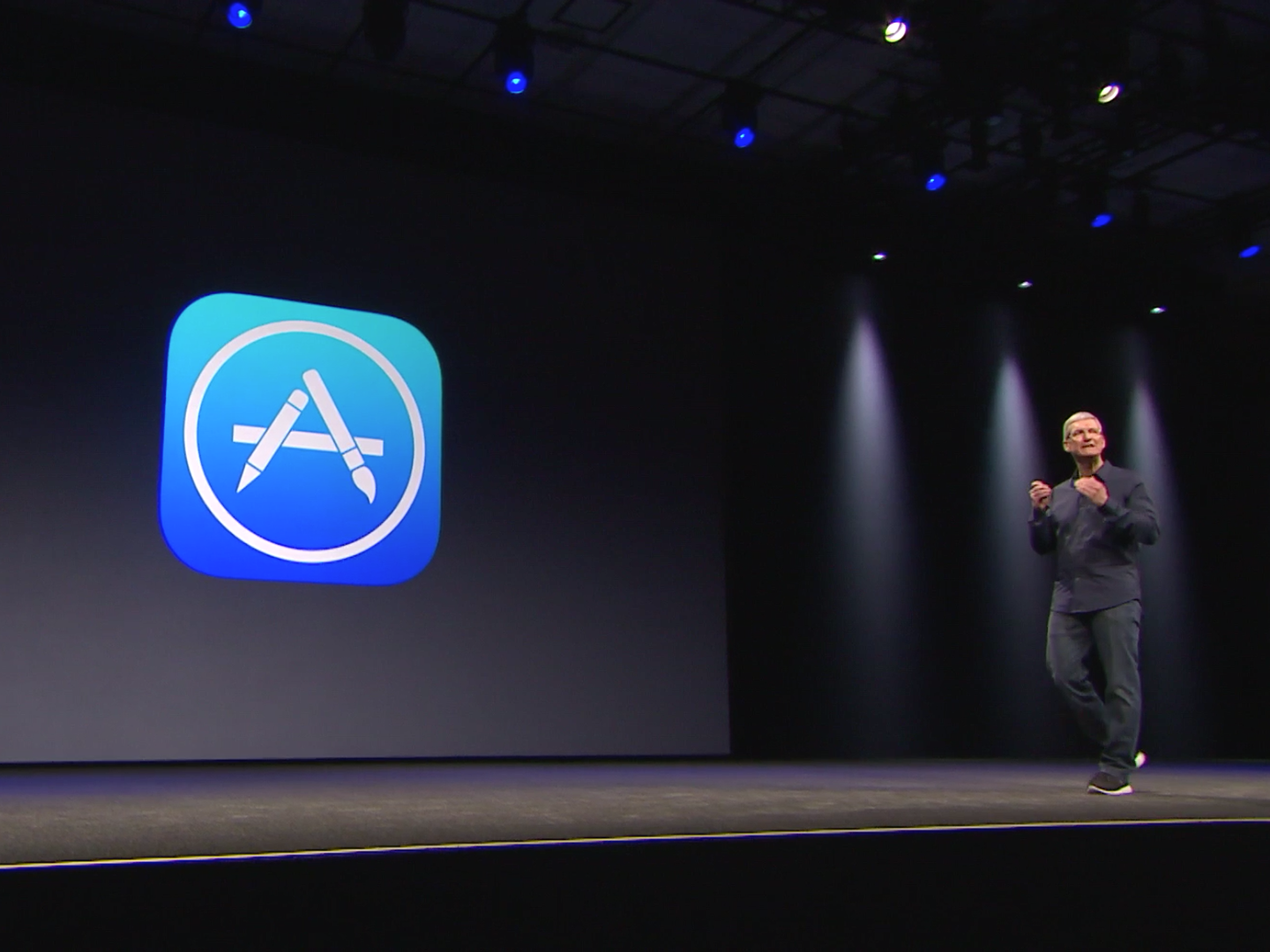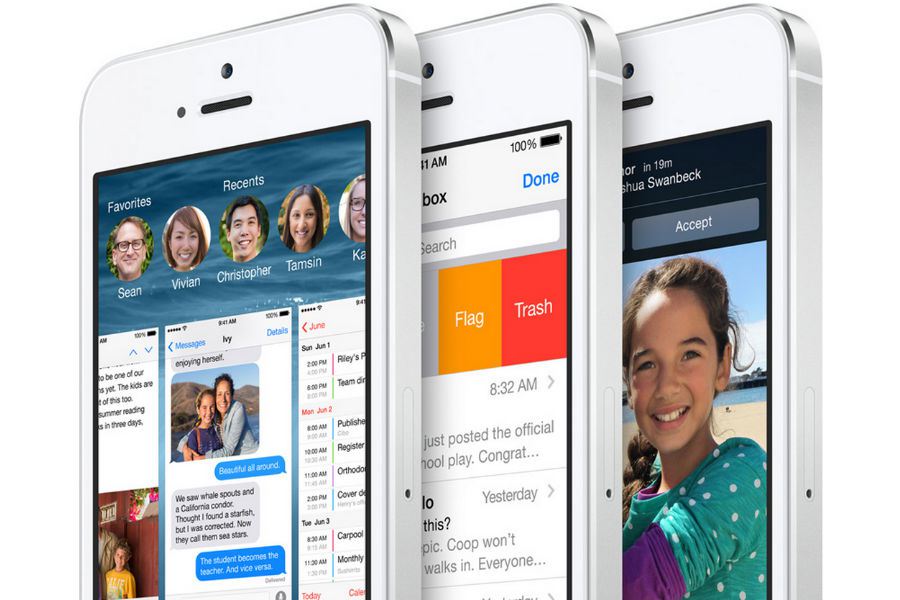iOS 8: Nine Features Apple Heavily Copied From Android And Others
Apple gave its fans plenty to swoon over at its Worldwide Developers Conference on Monday, but it also gave its haters a lot to sneer at. Although Apple introduced each feature as if it was brand new, some of iOS 8′s biggest additions have been available in some form on Google’s Android platform for years.
1. Apple’s Spotlight search: It now lets you search the Internet, too. Google's Android search feature has been able to do this for a long time.
2. Apple's QuickType: It can predict what word you're likely to type next. Android phones and BlackBerry phones have had this very feature for years.
QuickType works similarly to predictive keyboards we've seen on competing operating systems in the past. As you type, the keyboard will now offer three options just above the keyboard which you can select to complete the word. Unfortunately you still can’t swipe to type on iOS like you can on Android or Windows Phone, but it’s still a solid step forward.
technobuffalo.com3. iOS 8 Third-Party Keyboard: Apple will now let you replace the iOS 8 keyboard with a third-party keyboard like Swype, but Android has always let users to customize their keyboard
At WWDC 2014, Apple introduced Extensibility in iOS 8, which will enable things like widgets, Safari extensions and third-party keyboards. Extensibility will also enable developers to create widgets for iOS, a feature common on Android. Widgets will appear in the device's notification center.
4. Hey, Siri: Apple users can now activate Siri in the car without touching their iPhone by simply saying "Hey, Siri." Google already does that on some Android phones with the command "OK, Google."
It seems that Apple is taking a page from Google's book with their new "Hey, Siri" voice activation feature in iOS 8. This feature mimics the one found in Google Now, the voice-activated intelligent personal assistant available to just about all Android users. Apple's version allows you to bring up Siri with a simple voice command, but there's a small catch.
wonderhowto.com5. With iOS 8, all your iPhone photos will sync to iCloud meanwhile Android can do that automatically through Google+ photos. And unlike Apple, Google gives you unlimited storage for your photos.
6. Notification Center for iOS 8 will support third-party widgets for things like sports scores and breaking news. Google has allowed third-party widgets on the Android home screen for years.
7. iCloud has been extended to support all file types, and will let users access their files and folders across all their devices, similar to the Google Drive integration found in Android 4.4 KitKat and Chromebooks
8. iMessage will now let you send audio and video clips, a feature already found in WhatsApp and Snapchat
In its WWDC keynote, Apple announced a sheaf of changes to its iMessage service, including messages that will self destruct over time, sending short audio and video messages, and group messaging capabilities. That forces iMessage into the domain of other applications that provide messaging services, like Snapchat and WhatsApp. The latter isn’t too impressed.
9. The App Store will let you watch video demos of apps before you download them. The Google Play store for Android apps has always had video demos.
Although, if you’re an Android fan, it’s tempting to lampoon Apple for lifting features from its rival. However, calling iOS 8 a rip-off of Android would be disingenuous for a couple of reasons.
For one thing, Apple isn't just copying Android features verbatim. It’s adding its own spin. Notifications, for instance, will be interactive straight from the lock screen, which is not currently the case on Android. The addition of widgets in the Notification Center also shows an Apple-like touch: It lets the home screen stay as simple as possible, while moving more advanced functionality off to the side for power users.
Even app-to-app sharing is more advanced than what Android offers. It’ll allow developers to create photo filters within the main Photos app (this feature is actually borrowed from the “Lenses” function in Windows Phone), and extensions such as text translation or document watermarking that work across many apps.
droid-life.comTaking concepts from Android and refining them is not a new approach for Apple. Although Android was first to allow multitasking, Apple’s version had tighter controls on how apps could run in the background, saving system resources and battery life. Android was first to allow copy-and-paste, but Apple’s version was better-executed when it finally arrived. Google, in turn, tweaked Android over time to better handle system resources and to make copy-and-paste more consistent.
Meanwhile, Apple is adding plenty of other features to iOS 8, including HomeKit to make home automation simpler, HealthKit to unify all your health tracking apps, and a bunch of ways to make all Apple products more connected.
droid-life.comThis is exactly how competition should work. Instead of just blindly copying Android, Apple has found ways to improve upon key Android features, while adding other things that are entirely new. Now it’s Google’s turn to try and do the same. Whether you prefer iOS or Android, that’s a very good thing. Over the last couple years, mobile operating systems have felt stagnant, with only minor tweaks to the way we use them. The new features in iOS 8 are a sign that there’s plenty of room left to innovate.
